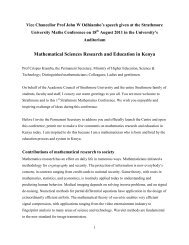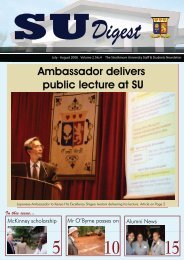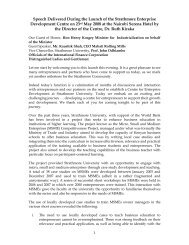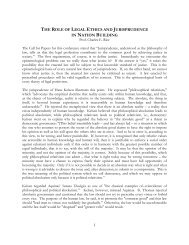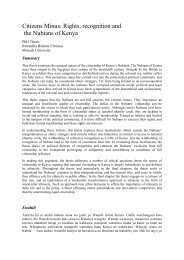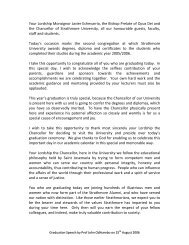Lucy-Gikonyo-paper Nataka-Chakula.pdf - Strathmore University
Lucy-Gikonyo-paper Nataka-Chakula.pdf - Strathmore University
Lucy-Gikonyo-paper Nataka-Chakula.pdf - Strathmore University
- No tags were found...
Create successful ePaper yourself
Turn your PDF publications into a flip-book with our unique Google optimized e-Paper software.
data on the multifaceted, sensitive phenomena characteristic of nursing and customer<br />
perceptions. Specifically, after making sense of the data, analysis was conducted using an<br />
inductive approach (Kyngas & Vanhanen, 1999). The use of inductive content analysis is<br />
recommended when there are no previous studies dealing with the phenomenon or when<br />
knowledge is fragmented. The inductive approach/process included open coding, creating<br />
categories and abstraction. Open coding was applied when notes and headings were written<br />
in the text while reading it. In addition, the written material was read through again, and as<br />
many headings as necessary were written down in the margins to describe all aspects of the<br />
content (Hsieh & Shannon 2005). The headings were then collected from the margins into<br />
coding sheets and categories were freely generated from these coding sheets. After this<br />
open coding, the lists of categories were grouped under higher order headings (Burnard,<br />
1991).The aim of grouping data was to reduce the number of categories by collapsing those<br />
that are similar or dissimilar into broader higher order categories. The purpose of creating<br />
categories was to provide a means of describing the phenomenon, to increase understanding<br />
and to generate knowledge. When formulating categories by inductive content analysis, the<br />
researcher comes to a decision, through interpretation, as to which things to put in the same<br />
category (Elos and Kyngas, 2008).<br />
Results<br />
The Trend of “Eating out” in Kenya<br />
The concept of “eating out” and reasons for its popularity were used at the start of the focus<br />
group discussion. The respondents were requested to indicate their opinions on “eating<br />
out”, whether they have observed such a trend and what could have contributed to the trend<br />
if any. Findings indicate that the “eating out” trend was emerging in Kenya. Though not<br />
well developed, respondents were positive about the existence of such a trend. The<br />
response that best demonstrated this finding was:<br />
“I think a lot of Kenyans nowadays are adapting to eating out. Maybe because of<br />
the way we are trying to get into the whole 24 hour business economy thing, but it is<br />
not yet there. But people are really trying. But nowadays since there are more<br />
women working; women tend to buy even their families dinner out. They take, take -<br />
out for their families and stuff like that. So I think its growing”.<br />
8





